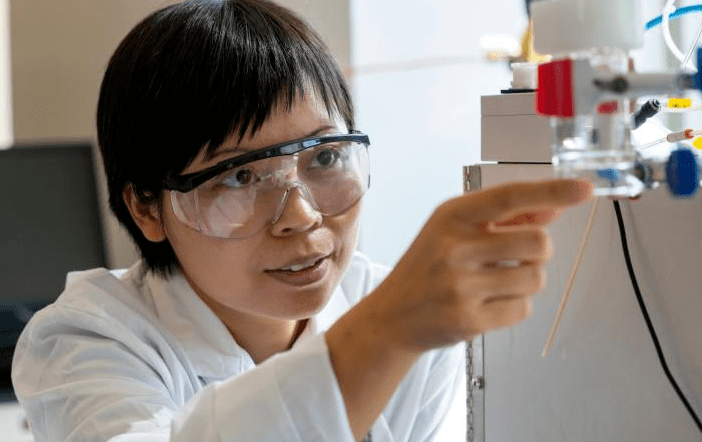A group of scientists at the Texas A&M Agricultural Research Institute (University of Texas Station, USA) has developed a system for producing biodegradable plastics or bioplastics from carbon dioxide (CO2) that could replace the non-biodegradable plastics currently in use.
This research addresses two challenges: the accumulation of non-degradable plastics and the remediation of greenhouse gas emissions.
The study, published Sept. 28 in the journal Chemistry, was done in collaboration with Susie Dai, associate professor in the Department of Plant Pathology and Microbiology at Texas a&M, and Joshua Yuan, formerly chair of synthetic biology and renewable products in the Department of Plant Pathology and Microbiology at Texas a&M and now a professor in the Lopata St. Louis Department of Energy, Environmental and Chemical Engineering at Washington University.
The study was made possible by the John '90 and Sally '92 Hood Foundation for Sustainable and Renewable Products, Texas A&M Ag Insurance and Texas A&M University.
Creating Bioplastics
Today's petroleum-based plastics do not degrade easily and are causing huge problems in the ecosystem and even in the oceans, Day said.
To address these issues, Texas A&M University agriculture and life sciences researchers and their team spent nearly two years developing an integrated system that uses carbon dioxide as a feedstock for bacterial growth and bioplastic production in nutrient solutions.
Peng Zhang, a postdoctoral research associate in the Department of Plant Pathology and Microbiology at Texas A&M University, and Kenan Chen contributed to this work. The Texas A&M University system has applied for a patent for the integrated system.
CO2 is already used with bacteria to produce many chemicals, including bioplastics, but this design allows CO2 to flow efficiently and smoothly through our bioplastic pipeline," said Day.

Day said, "In theory, it's kind of like a train of interconnected units." . "The first unit uses electricity to convert carbon dioxide into ethanol and two other carbon molecules, a process called electrocatalysis. In the second unit, bacteria consume ethanol and carbon molecules to become the machine that produces bioplastics, unlike the more difficult-to-degrade petroleum-based plastic polymers."
Carbon dioxide waste collection and reuse
Using carbon dioxide in this process also helps reduce greenhouse gas emissions. Many manufacturing processes emit carbon dioxide as waste.
"If we can capture waste CO2, we can reduce greenhouse gas emissions and can use it as a feedstock to produce a certain product," said Day. "This new platform has tremendous potential to address sustainability challenges and change the design of future CO2 reductions."
The main advantages of the new platform are faster response time and higher energy efficiency than photosynthesis.
Day said, "We are expanding the capabilities of this platform to a wide range of products, such as fuels, everyday chemicals and various materials." "This research shows a blueprint for "decarbonized biomanufacturing" that will transform our manufacturing industry."
Expanding future impact
Currently, bioplastics are more expensive than petroleum-based plastics, Day said. But if the technology is successful enough to produce bioplastics on an economic scale, industry could replace traditional plastic products with plastics that have less of an environmental impact. There would also be benefits from reducing carbon dioxide emissions from energy sectors such as natural gas and electric utilities.
Day said, "If bacteria are designed to consume CO2-derived molecules and produce targeted products, this innovation will open the door to new products."
"One of the advantages of this design is that the conditions for bacterial growth are mild and can be adapted to industrial-scale conditions."

